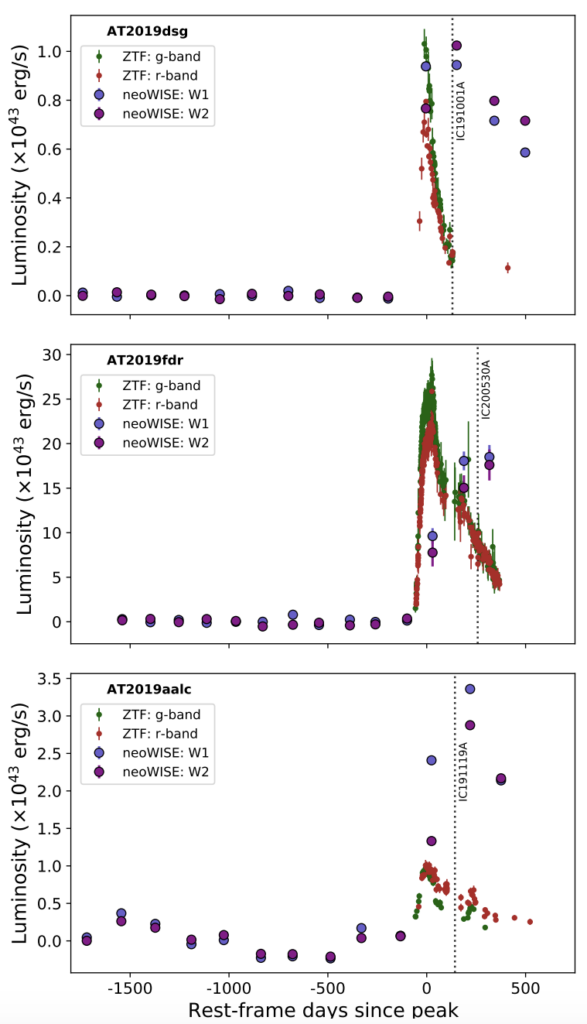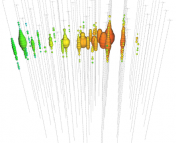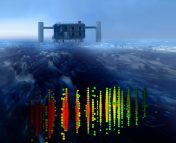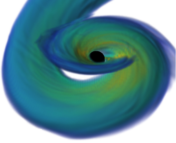Title: Establishing accretion flares from black holes as a major source of high energy neutrinos
Authors: S. Van Velzen, R. Stein et al.
First Author’s Institution: Leiden University
Status: Submitted to Nature [closed access]
Scientists have long sought to understand the physics behind very high energy cosmic particles. One particular mystery has been the origin of high energy neutrinos that are detected by experiments like Icecube (see for instance this and this bite). The authors of today’s paper propose a Thanksgiving themed explanation for a significant fraction of cosmic neutrinos – black holes that gobble (like a turkey, get it?) stars around them!
High energy neutrinos and how to find them
Neutrinos are elementary particles that play a major role in violent astrophysical explosions such as supernovae, gamma ray bursts and explosions involving neutron stars and black holes. However, detecting neutrinos is a challenge because they do not interact strongly with any other particles. Neutrino detection experiments thus rely on searching for these very weak effects that neutrinos can have on the surrounding medium. The Icecube experiment is one such experiment. It is located in Antarctica (!) and extends for more than 2 km below the surface (!!) and looks for neutrinos with energy of ~ PeV =10^15 eV (for comparison, the energy of optical photons coming from the sun is about 1 eV). The principle of neutrino detection with Icecube is as follows – when high energy neutrinos interact with large amounts of ice, they produce high velocity charged particles. These particles travel at a speed that is faster than the speed of light in ice, producing light called Cherenkov radiation. Based on the streaks of the Cherenkov radiation, Icecube detectors can localise the on-sky position from where the neutrino came.
Multimessenger astronomy with neutrinos
Every time Icecube detects a neutrino signal, an alert is issued to the astronomy community. Astronomers then look through their telescopes to check if there are any optical bursts coincident with the neutrino signal. So far, two optical flares have been found to be coincident with Icecube neutrinos – AT2019dsg and AT2019fdr. Interestingly, both these flares were associated with tidal disruption events (TDEs) – a bright explosion caused by supermassive black holes that disrupt and partially swallow stars orbiting closely around them. While the exact physics behind neutrino formation is still not understood, this is a compelling case that black holes are somehow involved in neutrino producing events.
A systematic search for neutrinos associated with black hole flares
Motivated by this observation, the authors of today’s paper conducted a systematic search for neutrinos associated with black hole flares. First, they identified black hole flares using data from the Zwicky Transient Facility – an optical telescope that has been surveying the entire northern sky every three days for the last four years. They identified about 1700 optical flares that came from centers of galaxies (where you would expect supermassive black holes to be). The challenge now was to identify neutrino-like flares from normal, AGN-like flares that are not associated with neutrinos.
To further reduce their sample, they noted an interesting observation – both AT2019dsg and AT2019fdr had “dust echoes”. Dust echoes arise when the light from the explosion is scattered by dust surrounding the explosion. As dust grains absorb optical light and reradiate it at infrared wavelengths, the dust echo is seen as a brightening at infrared wavelengths. Because the dust is located at some distance from the center of the explosion, a dust echo is seen several months after the optical explosion (see Figure 1). The authors used data from the NEOWISE infrared mission for all optical flares in their sample, and identified 63 flares which show signs of a dust echo.
They then searched through Icecube data to see if there was any neutrino emission associated with these flares and voila! They found another source – AT2019aalc – that was coincident with a neutrino signal that was previously unnoticed! Figure 1 shows the optical and infrared (IR) light curves of the three optical flares associated with neutrinos.

Neutrinos, black holes and dust echoes – a connection?
The authors carry out a statistical analysis and find that TDEs with dust echoes are correlated with neutrino emission at a significance of 3.7. They estimate that about 20% of neutrinos seen by Icecube could come from such TDE events. It is surprising that these TDEs which are essentially black hole accretion flares can produce very high energy (PeV) neutrinos, because this means that particles are accelerated to very high energies in such flares. The authors note that such high accelerations could be produced if the black hole is gobbling up material at the Eddington limit (the maximum rate at which black holes can accrete material) and have high magnetic fields of ~10^5 G (for comparison, the magnetic field of the sun is ~1 G). It remains to be seen if such conditions can actually be produced in models of TDEs. It is also not clear whether there is a connection between the dust echo and neutrino emission.
In spite of these open questions, this paper is successful in identifying a major source of high energy cosmic neutrinos. This paper thus represents a major step in increasing our still nascent understanding of neutrino astronomy.
Edited by : Ciara Johnson
Featured Image Credit: DESY, Science communications lab





Thanks for shedding more light on neutrinos (pls accept my congratulatory allusion). I am an elderly, amateur student of physics who became fascinated with neutrinos several years ago. This was mainly because of their very low mass and speed faster than light.
I was speaking today about them with a younger woman interested in particle physics and started today to update my knowledge. I hope to ask further questions and suggest other hypotheses.